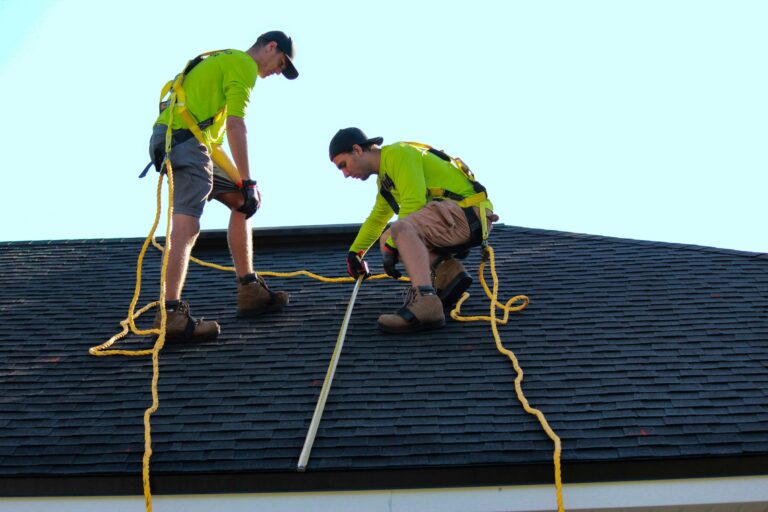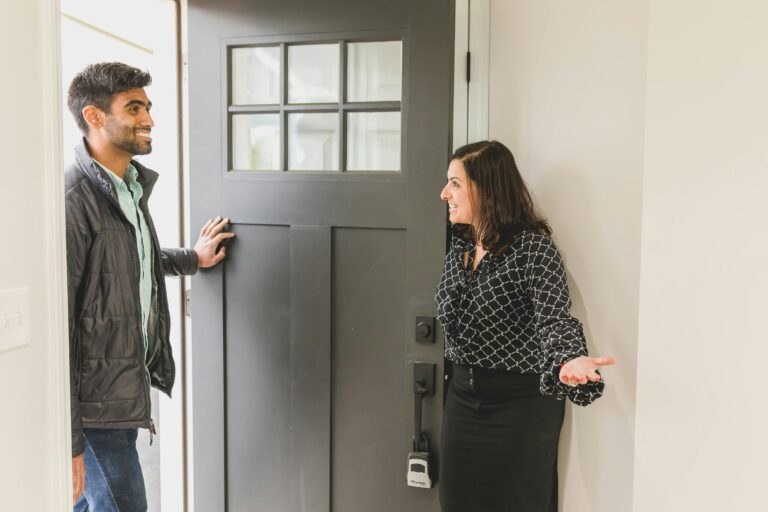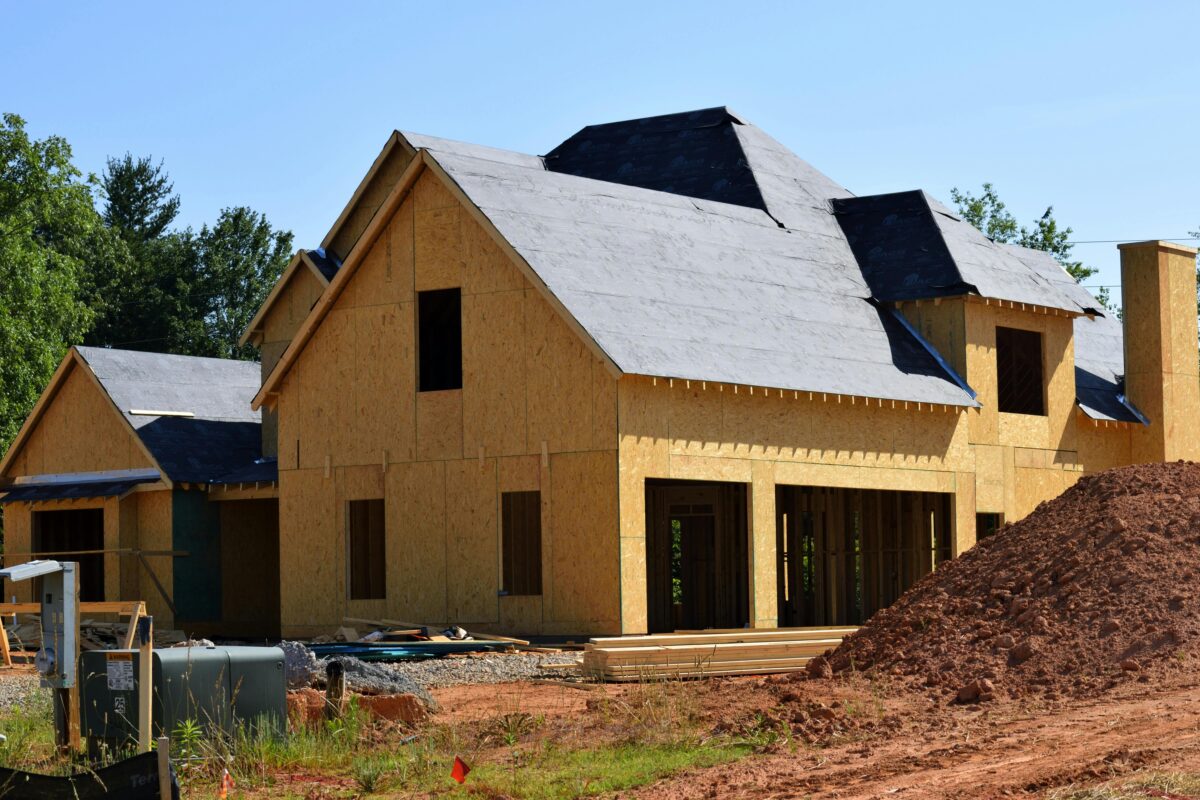If you’re running a roofing company, your customers aren’t across the country, they’re across town. Whether someone is searching “roof repair near me” or “best roofing contractor in [Your City],” you need your business to appear front and center. That’s where local SEO for roofers becomes essential.
Local SEO connects roofing contractors with people actively searching for their services in nearby areas. Without it, your business may not show up in local search results, even when you’re the closest or best option. Mastering this strategy is one of the most reliable ways to drive qualified traffic, boost visibility, and increase leads.
While local SEO may seem like a mystery, it’s really quite simple when understood properly. To help bring you to that understanding, this guide will lay out the basic of local SEO in a way that most anyone can use to grow their business and become the trusted roofing company that everyone in town knows to call.
Let’s dive in and build a solid local SEO foundation that helps your roofing business stay visible, competitive, and trusted.
Key Takeaways:
- Why local SEO is critical for growing your roofing business
- How to set up and optimize your Google Business Profile
- Strategies for managing reviews, building citations, and using local keywords
- A full local SEO audit checklist and how to use it as part of your long-term growth strategy
- Other helpful tips that will drive your marketing success even further
Why Is Local SEO Important for Roofers?
Local SEO is important for roofers because it connects your business with homeowners searching for roofing services in your area.
Roofing is a highly localized service. People don’t want to hire someone from across the state—they want a company that knows their area, their weather, their building codes, and their needs. That’s why Local SEO for Roofers is such a critical growth tool.
Local SEO ensures that your business shows up in the top spots on Google Maps, the Local Pack, and organic search results. Without it, you could lose jobs to competitors who are less experienced but more visible.
By optimizing for local SEO, you:
- Get found by people actively looking for roofing services
- Build trust through online reviews and visibility
- Stay ahead of competitors in your area
It’s one of the few marketing strategies that works while you sleep—and doesn’t stop delivering once your budget runs out, like ads do.
Step 1: Optimize Your Google Business Profile
Optimizing your Google Business Profile is the foundation of local SEO for roofers.
Your Google Business Profile (GBP) is often the first impression your roofing company makes on a potential customer. Whether someone is searching for “roof repair near me” or browsing through Google Maps, your GBP listing helps determine whether they’ll click to call, request a quote, or move on to a competitor. It’s also one of the most heavily weighted local SEO signals used by Google.
A fully optimized GBP builds credibility, earns visibility in the coveted Local Pack (the top 3 listings under the map), and significantly improves mobile search performance. According to Google, 76% of people who conduct a local search visit a business within 24 hours, and 28% result in a purchase—making this a high-converting marketing tool.
Follow these steps to properly optimize your GBP:
- Claim and verify your profile at google.com/business. Verification ensures you can manage and control the accuracy of your listing.
- Use your exact legal business name. Don’t add keywords or extra information—Google may flag this as spammy behavior.
- Enter a precise business address and a local phone number. Avoid P.O. boxes or call centers; use a number that matches your website.
- Choose the most relevant primary category—for roofers, this should be “Roofer.” You can also add secondary categories like “Roofing Contractor,” “Gutter Cleaning Service,” or “Siding Contractor,” depending on your services.
- Upload high-quality photos of your team, equipment, project sites, before-and-after jobs, trucks with branded decals, and your storefront (if applicable). Profiles with photos get 42% more direction requests and 35% more click-throughs.
- Craft a detailed business description (750 characters max) that clearly outlines your services, specialties, service area, years of experience, and local differentiators (e.g., “licensed, bonded, and insured roofer serving [City], [Region] since 2005”).
- List every service you offer individually. Google allows you to add a service list with custom descriptions. Be specific (e.g., “Asphalt Shingle Replacement,” “Metal Roof Installation,” etc.).
- Enable messaging so mobile users can reach you directly through Google.
- Post regular updates using Google Posts—project highlights, FAQs, limited-time offers, or seasonal roofing tips. Fresh content signals activity and increases engagement.
- Set accurate business hours and update them for holidays or emergencies.
- Monitor and respond to all reviews. Google encourages responses within 24–48 hours. Even a brief “Thank you for choosing us!” boosts engagement.
- Use the Q&A section strategically. Pre-load commonly asked questions with answers (e.g., “Do you offer free inspections?” or “Are you licensed and insured in [City]?”).
By completing every section of your Google Business Profile and keeping it active, you dramatically improve your odds of ranking in both the Local Pack and organic results. It’s a low-cost, high-impact platform for capturing high-intent local roofing leads.
Need help optimizing your Google listing and map presence? Explore our SEO for Roofers service.
Step 2: Build Local Citations (NAP Consistency)
Citations build trust with search engines and reinforce your local authority.
A citation is any online mention of your Name, Address, and Phone number (NAP). These listings appear in business directories, local platforms, and social media sites. Google uses citation consistency to verify your business’s legitimacy and location.
Priority citation platforms include:
- Google Business Profile
- Yelp
- HomeAdvisor
- Angi
- Better Business Bureau (BBB)
- Houzz
- Your local Chamber of Commerce
Consistency is key. Your NAP should match across every listing. That means no typos, mismatched suite numbers, or outdated phone numbers. You should also check and update your listings at least quarterly.
Don’t forget about aggregators like Neustar, Factual, and Infogroup. These data sources feed dozens of local directories. Keep them clean and current.
Step 3: Use Location-Based Keywords
Using location-based keywords in your website content helps match search intent with your services.
Search engines rely on keyword signals to understand the relevance and location of your services. For roofing companies, this means you need to clearly tell Google not only what you do (e.g., roof replacement, storm damage repair) but also where you do it. Including strategic location-based keywords allows your website to appear when homeowners search for services in their specific area.
This approach is especially important for service area businesses (SABs) like roofing contractors, who often operate across multiple cities or regions without a central storefront. Whether you’re in a large metro area or covering rural counties, search engines need clear signals to associate your business with those places.
Examples of high-performing local roofing keywords include:
- “Roof repair in [City]”
- “Gutter installation contractor in [County]”
- “Emergency roofer near [Neighborhood]”
- “Best roofing company in [Zip Code]”
Best practices for local keyword optimization:
- Use city and neighborhood names in page titles, headers (H1-H3), and meta descriptions
- Create separate landing pages for each service area, with unique content relevant to that location (avoid copy-pasting)
- Mention nearby landmarks or community features (e.g., schools, districts) to add geographic relevance
- Include local reviews or testimonials referencing the city (e.g., “We had our roof replaced in Allen, TX, and it looks amazing!”)
- Embed Google Maps on your contact or service area pages
- Use schema markup to tag your service area and location data
It’s important to note: you don’t need to overload your content with “near me” phrasing. Google already understands proximity and user location when returning local results. Keyword stuffing these terms can actually hurt readability and appear manipulative.
Instead, focus on writing content that sounds natural to your audience and clearly defines the scope of your services in each location. This builds trust with both search engines and human readers.
Step 4: Get More Local Reviews
Local reviews improve your credibility, visibility, and customer conversion rate.
When it comes to choosing a roofer, trust is everything. And for most homeowners, trust begins with what others say about you online. Reviews are not just about reputation; they are also a direct ranking factor for local SEO. Google considers the quantity, recency, and quality of reviews when deciding which businesses to feature in the Local Pack (those top three results under the map).
Having a steady stream of recent, relevant, and positive reviews helps your business:
- Appear more frequently in local searches
- Increase click-through rates from Maps and Search
- Build immediate trust with prospective customers
- Signal active engagement to Google’s algorithm
Tips for earning more high-impact local reviews:
- Ask immediately after job completion. Strike while the experience is still fresh and positive.
- Use automation to your advantage. Set up automated emails or SMS follow-ups with a direct link to your Google review form.
- Include a call to action on invoices, email signatures, or thank-you pages. Make it part of your closeout process.
- Incentivize internally—not externally. Avoid offering discounts in exchange for reviews, which can violate Google’s policies. Instead, offer bonuses to your team for each new review received.
- Train your team to ask in person. Field crews and sales reps can casually ask for feedback while still on-site.
Once you begin collecting reviews, respond to every single one, especially the negative ones. A thoughtful, professional response not only helps resolve the issue but also shows prospective customers that you care and are responsive. Even a simple “Thanks for your kind words!” shows engagement.
Pro tip: Encourage customers to mention specific services and their city in their review. Phrases like “roof replacement in Fort Worth” or “roof leak repair in Plano” provide additional local signals that can reinforce keyword relevance and search placement.
Make reviews a consistent, trackable part of your marketing strategy. Use a tool or CRM to monitor review trends, flag negative feedback, and measure growth over time.
Step 5: Use a Local SEO Audit Checklist
A structured audit helps ensure you’re covering all the most important ranking factors.
Many roofing companies mistakenly believe that once their website and Google Business Profile are live, their local SEO work is done. In reality, local SEO is a living strategy that needs to evolve as your business grows, competitors adapt, and search engines update their algorithms. Without regular audits, it’s easy to overlook critical issues, like a broken service area page, outdated citations, or declining review velocity, that slowly erode your visibility over time.
A well-rounded SEO audit allows you to:
- Identify and fix technical issues that affect your ranking
- Measure the performance of your existing optimizations
- Prioritize updates based on impact and urgency
- Maintain alignment with Google’s evolving ranking factors
- Spot emerging opportunities to outperform competitors in your service area
There are several free and paid tools available that can assist you with performing an audit of your website. Examples include Semrush, Moz, Ubersuggest, and more. These tools are incredibly helpful, but they may take some time learning how to use them effectively.
To help you get started faster, here’s a streamlined version of our local SEO checklist. For best results, we recommend revisiting this checklist quarterly and tracking your changes over time.
Local SEO Checklist for Roofers
| ✅ | ACTION ITEM | DETAILS |
| Google Business Profile | Is yours complete, verified, accurate, and updated monthly (including posts and photos)? | |
| NAP (Name, Address, Phone number) | Are these consistent across all major directories, aggregators, and your website? | |
| Website content | Do these include location-specific keywords, structured data (schema markup), and clear service-area targeting? | |
| Dedicated service area pages | Do these exist for each city or region served, with custom content (not copy-pasted)? | |
| Online reviews | Are these actively requested and responded to across platforms like Google, Facebook, and Yelp? | |
| Mobile performance | Does your site load in under 3 seconds, use a responsive design, and is free of usability errors? | |
| Google Analytics and Search Console | Are these properly installed, tracking traffic, click-through rates, and rankings? | |
| Backlink profile | Does this include local partners, vendors, directories, and citations to boost authority? | |
| Internal linking | Does this support easy navigation to service pages and reinforce SEO across the site? | |
| Technical SEO | Are issues (404 errors, redirects, duplicate metadata) reviewed and resolved regularly? |
As you scale your roofing business, tracking local SEO performance with a checklist keeps your strategy focused and measurable. It also ensures your team or marketing partner stays accountable to results, not just tasks.
If you’re unsure where to start, begin by benchmarking your current rankings, website traffic, and review count. Then use this checklist to identify 1–2 key focus areas each quarter. That’s where the compounding value of local SEO really pays off.
Bonus: Use Paid Ads to Boost Local Visibility
While local SEO builds long-term visibility, Google Ads and Facebook Ads can provide immediate exposure.
When executed correctly, paid advertising can be a powerful complement to your local SEO strategy. It allows your roofing business to show up prominently on search engines and social platforms even before your organic rankings fully mature. Whether you’re launching a new service, entering a new market, or simply trying to generate consistent leads year-round, paid ads provide the control and scalability that SEO alone may not offer.
Why combine paid ads with local SEO?
- Bridge the gap while your SEO is still gaining traction
- Dominate visibility by appearing in both the ads and organic listings
- Retarget visitors who found your site through search but didn’t convert
- Test messaging and offers that can later be applied to your website and organic strategy
While there are many options for paid ads, we recommend focusing on the two most effective and profitable platforms for your roofing business:
Google Ads for Roofers
Google Ads allows you to target high-intent keywords, like “emergency roof repair near me” or “licensed roofer in [City]”, and appear at the very top of the search results page.
With Google Ads, you can:
- Bid on exact-match or phrase-match local keywords
- Control your ad budget by city, zip code, or even radius
- Track which keywords drive calls, form submissions, and quote requests
- Run seasonal or weather-based campaigns (e.g., “storm damage repair” after a hailstorm)
Google Ads are especially effective for capturing searchers who are ready to act now and often result in highly qualified leads.
Learn more about Google Ads services for your roofing company.
Facebook Ads for Roofers
Facebook Ads offer a different approach. Instead of waiting for someone to search, you proactively get your business in front of local homeowners based on demographics, interests, behaviors, and geographic location.
Facebook Ads can help you:
- Build brand awareness and recognition before someone has an immediate roofing need
- Promote time-sensitive offers, free inspections, or seasonal specials
- Run retargeting ads to follow up with people who visited your website but didn’t convert
- Encourage engagement, shares, and word-of-mouth referrals through visual storytelling
This platform is ideal for reinforcing brand familiarity, especially in neighborhoods where you’ve already completed work and want to increase word-of-mouth momentum.
Explore Facebook Ads services for roofing companies.
How Paid Ads Support Local SEO
While SEO and paid ads serve different functions, they work best when aligned. Paid ads can:
- Drive traffic to your website, increasing time-on-site and conversion data that informs future SEO updates
- Generate reviews, especially if tied to a great offer or prompt post-job follow-up
- Strengthen keyword data, revealing high-performing terms to incorporate into your organic strategy
By combining these efforts, you maximize your local presence and stay top-of-mind throughout the homeowner’s buying journey.
Paid advertising isn’t a replacement for SEO, but when used strategically, it’s a powerful amplifier. For roofing companies looking to grow faster, dominate competitive areas, or ensure a steady pipeline of leads, Google Ads and Facebook Ads are a smart addition to your digital marketing mix.
Paid Ads Strategies for Roofers
Paid ads allow you to target high-intent keywords, like “emergency roof repair near me” or “licensed roofer in [City],” and appear at the very top of the search results page. These ads are shown above organic listings and can be tailored precisely to your services, target geography, and homeowner search behavior.
With Paid Ads, you can:
- Bid on exact-match or phrase-match local keywords that indicate buyer intent
- Control your ad budget by city, zip code, radius, or even time of day
- Track which keywords and campaigns drive calls, form submissions, and quote requests
- Run seasonal or weather-based campaigns (e.g., “storm damage repair” after a hailstorm)
- Create ad extensions that highlight reviews, service areas, or promotions directly in search results
You can also use conversion tracking to understand which keywords produce leads with the highest closing rates, allowing you to reinvest more effectively. Dynamic call tracking, landing page testing, and retargeting features can further increase efficiency and ROI.
Ads are especially effective for capturing searchers who are ready to act now and often result in highly qualified leads. For roofing companies in competitive markets, a well-managed paid ads campaign can make the difference between being seen first or not at all.
Why is Local SEO so important for Roofers?
Local SEO is one of the most valuable long-term investments you can make in growing and sustaining your roofing business.
Local SEO creates a system that works behind the scenes 24/7, bringing in high-intent prospects who are actively searching for your services—right when they need you most.
What makes local SEO for roofers so powerful is its combination of longevity, precision, and trust-building. Once you’ve earned top positions in the Local Pack or organic results for key service-area keywords, you don’t need to keep paying to appear there. That visibility compounds over time, delivering a steady stream of leads from Google Maps, mobile searches, and local queries.
It’s also scalable. Whether you serve one city or a dozen, you can expand your SEO footprint with service area pages, local citations, and targeted content. As you grow, your visibility grows with you.
Most importantly, local SEO builds authority and credibility. Appearing in local search results, alongside positive reviews and a complete Google Business Profile, tells homeowners you’re an established and trusted business in their community. That level of visibility not only improves conversion rates, but it also enhances every other marketing channel you invest in.
When combined with a strong website, optimized landing pages, and smart retargeting or review strategies, local SEO acts as the engine that powers your entire digital presence.
If you’re serious about getting more roofing jobs in your service area, local SEO is no longer optional; it’s essential. It connects you with nearby homeowners at the exact moment they’re looking for help, builds long-term brand equity, and keeps you ahead of competitors who still rely only on referrals or paid ads.
Ready to get started with a complete local SEO strategy? Let’s talk.
FAQs About Local SEO for Roofers
What is local SEO for roofers?
Local SEO for roofers is the process of optimizing your business’s online presence to rank higher in local search results. This includes improving your Google Business Profile, earning local reviews, using location keywords, and building consistent citations.
How long does local SEO take to work?
Local SEO usually takes between 3 and 6 months to show consistent results. Timeframes vary depending on your current visibility, market competition, and how aggressively you implement best practices.
Can I do local SEO myself or should I hire a professional?
You can do basic local SEO tasks like updating your Google Business Profile and adding local keywords. But for more advanced strategies (like schema markup, link building, and performance tracking), a professional SEO agency can help you achieve better results faster.
Why is local SEO more effective than traditional advertising for roofers?
Local SEO targets homeowners who are actively searching for roofing services. Unlike traditional ads, which interrupt people, SEO meets them when they’re ready to buy—resulting in higher-quality leads.
Do I need a separate page for each city I serve?
Yes. Creating individual location pages with custom content for each city improves your chances of ranking in local search. Google prefers highly relevant, location-specific content.
How does SEO for roofers differ from general SEO?
SEO for roofers includes strategies used by any business, but puts more emphasis on local signals—like proximity, maps visibility, and reviews. It also focuses on service-area content and reputation management.
Table of Contents
Keep on learnin'
Related Articles

Winning the Offseason: Fall Roofing Marketing Strategies That Win Customers

Roofing Marketing Strategies: Timing Campaigns for Maximum Impact

Creating the Perfect Local Business Listing For Your Roofing Business

